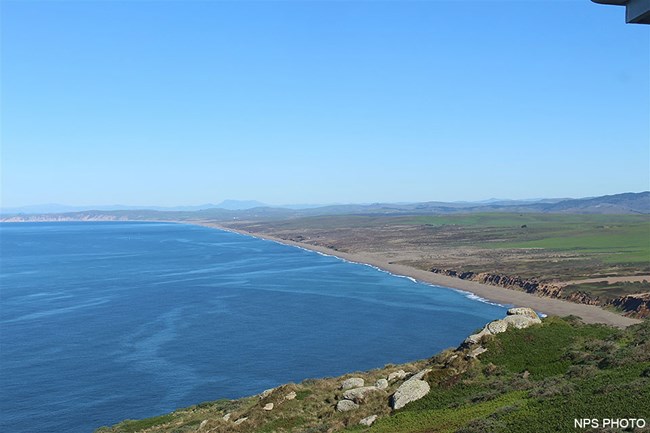
Point Reyes National Seashore is a Class I park and air quality is generally good due to the prevailing westerly marine flows. However, during periods when atmospheric conditions displace the east Pacific high pressure system, air flows from the San Francisco Bay area can degrade the air quality of the seashore. This mainly occurs during the late summer and early fall, when the major atmospheric systems undergo a seasonal change. During this time, the seashore is often impacted by a general haze, which significantly impairs visibility. Ground-Level OzoneAnother air quality issue impacting Point Reyes National Seashore is ground-level ozone. Ground-level ozone is a colorless gaseous air pollutant that forms near the earth's surface when volatile organic compounds (from sources including gasoline, solvents, and vegetation) react with nitrogen oxide emissions (from combustion including fossil fuel burning) in the presence of sunlight. This is different from the ozone layer in the upper atmosphere, which protects us from harmful ultraviolet radiation. Ground-level ozone is a respiratory irritant that can cause coughing, sinus inflammation, chest pains, scratchy throat, and lung damage. Groups of people most vulnerable to ozone pollution include: children, the elderly, active adults, and people of all ages who have lung diseases such as asthma. Long term exposures to ozone may also reduce the growth and productivity of forest ecosystems and damage sensitive plant species. In 2008, the Environmental Protection Agency (EPA) established a national ozone standard of 75 parts per billion (ppb). Increasing scientific evidence indicated that detrimental health effects and damage to natural ecosystems can occur at ozone concentrations below this standard. These findings prompted the EPA to review the ozone standard. On October 1, 2015, the EPA strengthened the national ozone standard by setting the new level at 70 parts per billion. The National Park Service supports a more protective standard because it will require reductions in ozone pollution. As with other air pollution affecting national parks, the vast majority of ozone pollution in parks comes from outside park boundaries. Reducing emissions from source areas will lead to healthier air for thousands of park visitors and employees, and will improve conditions for park ecosystems including ozone-sensitive plants. As of October 1, 2015, there are 125 national park units, including Point Reyes National Seashore, that are in areas with ozone concentrations for 2012–2014 that exceed 70 ppb. (The EPA ozone standard is based on a 3 year average.) The current (2012–2014) ozone level for Point Reyes National Seashore is 72 ppb, which may result in oxidant injury to vegetation. There are approximately 37 plant and lichen species found at Point Reyes with known sensitivities to sulfur dioxide, ozone, and nitrogen oxides. As part of the nonattainment area designation process, parks in counties that are proposed for nonattainment may be asked to work closely with state air quality regulators. States may need estimates of vehicle use in parks or other information (e.g., prescribed fire activities) to ensure that ozone precursor emissions from park activities are properly characterized. Following designation, parks included in nonattainment areas will be required to coordinate certain activities with states, such as large construction and prescribed fire projects. In addition, parks will need to comply with regulations for ensuring that federal activities do not degrade air quality or keep an area where air quality is improving from achieving attainment of the ozone standard. Current Air QualityCurrent Air Quality Data
Current Air Quality at Palomarin, which is located in the south end of the National Seashore.This graph shows how smoke and/or particulate matter is affecting air quality in the south end of Point Reyes National Seashore based on data from a low-cost sensor, which is not a regulatory monitor but is useful for educational purposes.
Additional ResourcesScientific studies and monitoring are crucial to understanding the impacts of air pollution on the environment. In "Park Air Profiles - Point Reyes National Seashore," you can: learn more about how air pollution is affecting Point Reyes National Seashore; find out how pollutants—including nitrogen, ozone, mercury, and fine particles—affect resources such as streams, soils, and scenic vistas; and access air quality data and key references.. Learn more about what the National Park Service is doing to address these issues. Explore the NPS Air website for more information on air quality and how you can get involved. Learn More |
Last updated: May 20, 2024
